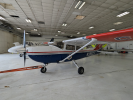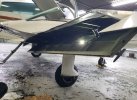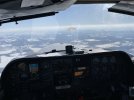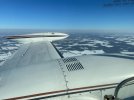I've heard that before, but I never really understood the science behind it. Is it that you're reducing lift, and therefore increasing weight on the wheels, which impart more friction and slow you down "faster?" I would think it would depend on the plane and where the increased drag cross-section would be outweighed by the increased weight. For a Cessna, I could see the flaps providing quite a bit of lift (or lack thereof when brought up).
I've heard the same thing for my plane, but I'm not sure if that was a Cessna carry over by someone. The flaps don't really increase lift much (only about 2 knots change in stall speed), and are more for adjusting approach angle. They do act as spoilers, though, so it makes me wonder if it's better to leave them down. I end up doing just that, but not because of any proven science.
Calling
@sevenhelmet or
@IKE









